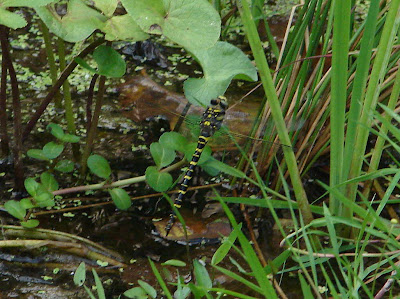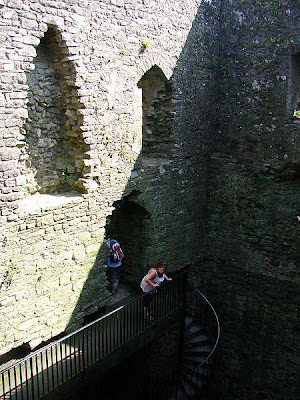

House Sparrows and Wood Pigeons are among the most common bird species at Frog End. This is a juvenile Wood Pigeon - it lacks the white neck patch of the adult.

This Willow Beauty moth came to the kitchen light one evening.

An unidentified caterpillar - possibly a Clouded Drab but I'll need to check that out when I get home.

A male Southern Hawker was around the pond for a while - the Southern Hawker has been the most frequent dragonfly visitor since I arrived.

Another female Lesser Stag Beetle was rescued from a post hole prior to it being filled with concrete. Note the typical red Devon clay soil.


A female Golden -ringed Dragonfly oviposited in the pond on Saturday and then flew to a garden chair to bask.

The Golden-ringed is the sixth dragonfly species to be seen at Frog End. The others have been Migrant Hawker; Southern Hawker; Broad-bodied Chaser; Common Darter; and Emperor.








































